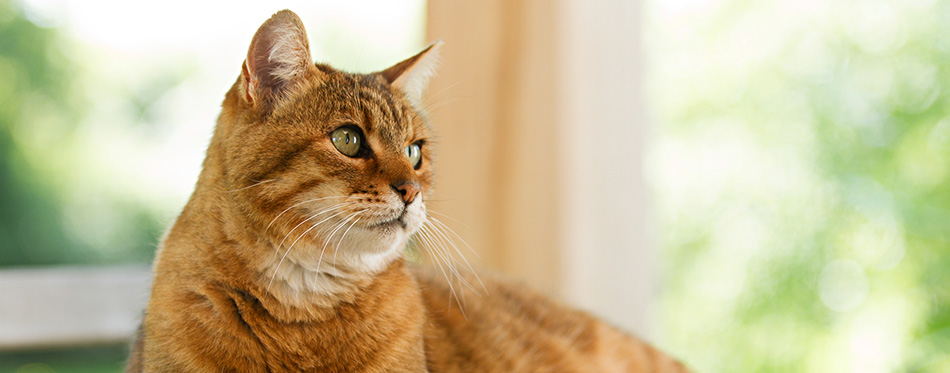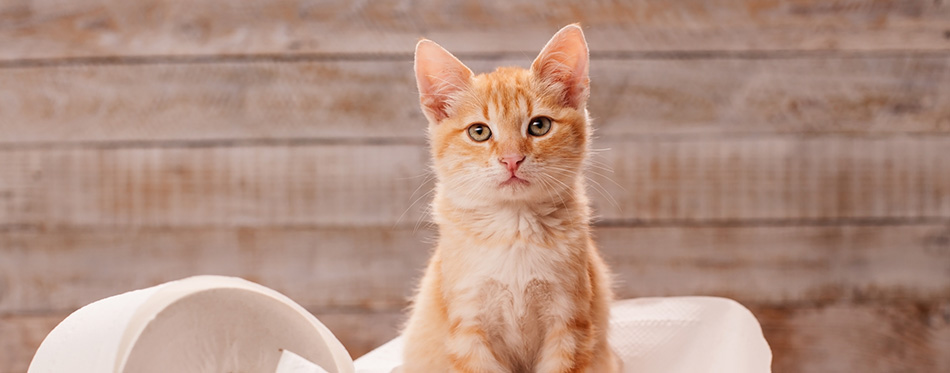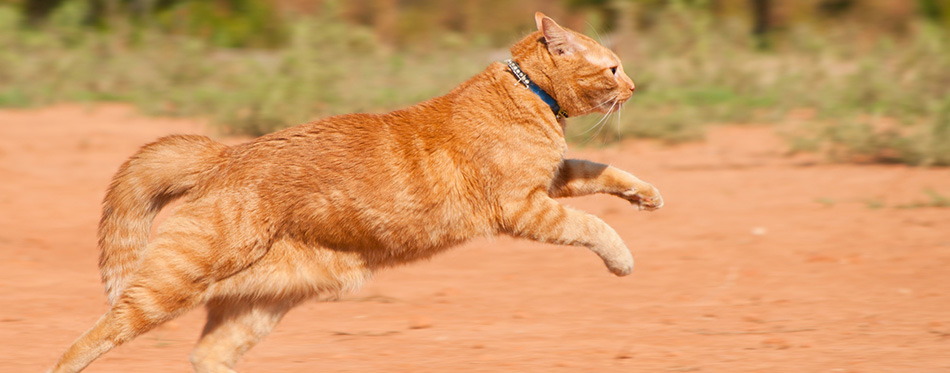In the feline population, Tabby cats are quite widespread; however, not many people are aware that they are not recognized as a breed. A Tabby kitty is in the category of the cutest felines worldwide, and also among the most common. They come across as very lively, friendly as well as sociable, and they are exceptional as pets. The cat is distinguished by its coat color that comes in an orange hue. Though they have been around for a long time, there are still many things about this beautiful feline that you probably don’t know. Read on to get all the details!

Tabby Cat is Not a Breed
Some people are of the belief that the orange Tabby cat is an actual breed. Perhaps this belief came due to the fact that these cats are so numerous, or because of the distinguishing color of their coat. However, this is completely wrong. The truth of the matter is that the orange Tabby cat cuts across all breeds, sizes, and shapes of cats. It is quite common to see an orange-colored Persian, Maine Coon, Burmese, Devon Rex, and many more.
But then, what is the origin of the orange color? According to scientists, all members of the feline population are either red or black by default, though their eventual shade will be defined by the melanin they inherited from their parents. In order to realize the orange hue in cats, then, the pheomelanin needs to dominate the eumelanin, which is known to be responsible for those shades of black.
Orange Tabby Cats are Not All Male
A common question many cat lovers ask is ”are all orange cats male”? Over the years, the image of the cheeky, headstrong orange tabby cat has set in many minds – but whether red cats are really all male, is on a completely different page. It is true, however, that orange male Tabby cats are more common than females. According to findings, we have just 20 females to every 80 males that are born. But why?
The secret of the orange coat lies in genetics because the coat color is inherited from the parents to the children. The cat DNA comprises 38 chromosomes that are grouped into 19 pairs. One chromosome of each pair comes from the mother, the other from the father. The gene that is responsible for the orange color is only borne by the X chromosome, but the females carry the XX chromosomes, while males have only one X chromosome and one Y chromosome. It is here that it is decided whether the cat gets a red fur coat or another.
To acquire the marmalade color, the male needs only a single orange-colored parent and the coat color gene sits on the X chromosome. Orange tabby cats are, therefore, mostly male because they only need the chromosome for the orange coat color once in their DNA. Female cats, on the other hand, only have orange fur if the corresponding gene sits on both X chromosomes. Thus, an orange-colored female cannot be born until two orange-colored parents mate and conceive. Similar statistics are still evident in many other breeds of cats.
Tabby Isn’t Just a Color; It’s Seen As a Coat Marking
We tend to see all types of orange cats, but all Tabby cats don’t come with the orange color. We have seen so many with gray, black, brown, tan, etc. In addition, solid-colored orange cats do not exist; all kitties with orange color come with a streak of Tabby in them, irrespective of how light the feline’s color might be.
Tabby is a term that refers to the distinctive pattern we see in the color shades of the feline’s coat. They come in five different types.
- Classic – Swirled all over the kitty’s coat are streaks of some bold markings or patterns, coming in shades of gray or black(think: marble cake).
- Mackerel – From the vertebra side of the feline’s coat comes some line streaks in vertical forms from an extended, bold line. This is comparable to a fishbone deposited on the kitty’s coat.
- Spotted – This group of Tabby cat have their coats in solid-colored spots which are dotted roughly on the orange-colored fur.
- Agouti or ticked – With this pattern, the streaks may not be realized as distinct. This is because the colors mesh together as clumps of distinct-colored hair, which were restricted in one space. The orange color may well be limited to some places like the paws and face, or it may be found scattered among the other parts.
- Tortoiseshell – This pattern is quite rare and not as common as the previous four. A couple of distinctive shades exist in the Tortoiseshell Tabby We have the orange and the black; however, they may well combine based on the aforementioned four patterns. Most people who own Tabby cats do not see the Tortoiseshell as a distinct coat marking.
They are Quite Brave
The ginger-colored cats are quite brave. Getting into trouble seems to be part of their nature, as they are known to be fearless. They harbor no atom of fear for people and other house pets. However, they enjoy living in the same home with other pets; perhaps, this may be due to the fact that it means more food for the voracious kitty. Once they notice that everyone is distracted, the cat would quickly grab the food meant for another house pet, and they don’t even fear dogs.
Laziness is a Fault With the Orange Tabby
Cats sporting the ginger color are known to be extremely lazy; the cat will never go out of its way to enjoy some playtime; neither does it hunt, chase other house pets or even respond to stimulated cat toys in the house. The cat is plain lazy, all it does is to sit down all day long, have a snack, or perhaps nap the afternoon away. The laziness may not be breed-specific since all orange Tabby cats are not members of the same breed. But it appears to definitely have something to do with the color of their coats.
They All Have Distinctive Personalities
Cat parents who have kept the ginger-colored cats for several years have a common view about the cat; each has their own distinct personalities. You are not likely to find a single ginger-colored kitty that is like any other. One parent might have a cat that is crazy and wild, while another parent will be applauding their cat for being kind and sweet. It is not possible to categorize the orange Tabby kitten since they all come with unique characters.

Some Have a Close Resemblance To Tigers
Any orange Tabby cat that has a close resemblance to a tiger is called a mackerel Tabby. These types of Tabby cats are distinguished by stripes that make them look like tigers, and when you take their orange color into consideration, the similarity is quite striking. However, these kitties are not in any way related to tigers. It is all just due to the markings.
The Orange Tabby Cat Has a Place In Religious History
If you look closely at the forehead of the orange Tabby cat, you will decipher a distinct “M” etched in the middle. An Islamic myth carries the story that the “M” impression came as a gift from the prophet Mohammed to his pet cat named Muezza, for her loyal services. According to the tale, Mohammed usually places his hand on Muezza’s forehead whenever she cuddles next to him.
The story also has a Christian version where it was said that baby Jesus had a cute orange cat cuddle next to him to warm him up during one cold night, and in appreciation, Mother Mary bestowed a kiss on the kitty’s forehead, and the “M” was etched at the spot, in the significance of Mary’s kiss. There is still another version that said that the Virgin merely stroked the cat’s forehead.
The Orange Tabby Cat Has Political Connections
According to Historians, Winston Churchill loved to have cats around him and owned a couple of orange-colored Tabby cats: Mickey and Tango. It was reported that the two cats attended cabinet meetings with him; they were also present at banquets where no one was permitted to touch their food until both cats were comfortably seated.
Winston Churchill left word before his death that ginger cats must have a place in his home even after he was long gone. And faithful to the great politician’s wishes, his Chartwell home has an orange Tabby kitty known as Jock in residence.
The Orange Tabby Kitty is a Guinness World Record Holder
These marmalade colored cats are quite renowned for their excessive body weight; in fact, the cat is in the Guinness World Record as the titleholder for the “The World’s Fattest Cat.” The particular feline that earned the title was Himmy – Thomas Vyse’s orange Tabby cat, which weighed a total of 47 pounds during the time of the award.

After Himmy’s demise, the team at the Guinness World Record made the conscious decision to bring an end to that particular award out of fear that some cat parents might be forcing their pets into obesity, just so that they can surpass the record set by Himmy. The reason behind the kitty’s excess weight is due to the fact that it is a voracious eater. In fact, this kit was not known to be selective and would eat anything in sight! You may also like our article on the best cat food for weight loss.
Generally, Tabby cats are also known to eat any baby food that drops from kids, and if they happen to come across a dog’s bowl with food in it, they will simply indulge themselves. This is not the kind of cat to keep alongside a dog since the pet parent will end up with an overweight kitty, and a malnourished dog. It is a known fact that overweight cats are predisposed to different health issues; thus, recommendations are that any pet parents who keep a cat should not allow it to overfeed.

